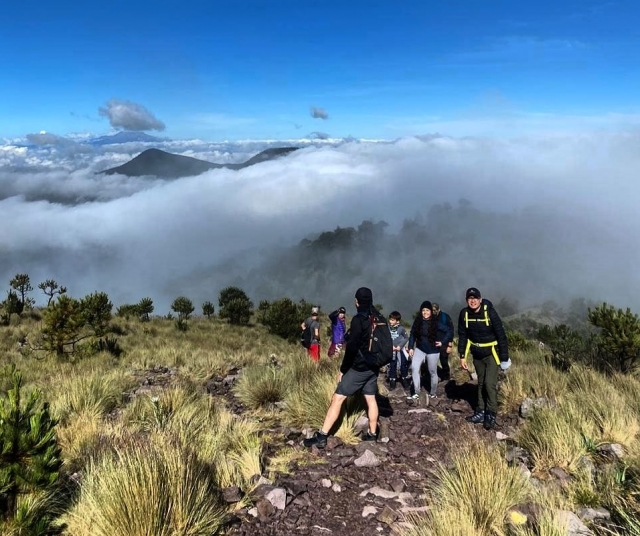This discomfort is commonly experienced during extreme sports such as skydiving, paragliding flights, mountain hiking ascents or even when rock climbing. These types of adventure sports have become increasingly common practices nowadays. They're sports that provide plenty of fun and adrenaline but also carry certain risks, which is why it's important to be prepared and informed before any activity.

Altitude sicknesses are conditions resulting from various factors, and there are some tips to identify symptoms in time before an accident occurs.
Vertigo at heights
Apparently more than 20% of the population suffers from vertigo when facing a void. Leaning over a balcony or an aeroplane window is something that terrifies certain people but also happens to athletes when ascending mountains or climbing high rocks. Between causing dizziness, vomiting and sweating, acrophobia is the reason for much distress for some.

Acrophobia means "fear of extreme points" and although it may sound severe, it isn't actually an illness - it's a state of anxiety provoked by heights when fearing a fall from a very high place.

The causes of this unpleasant state have been studied and originate from traumatic experiences like falls or other physical accidents, but also from traumatic psychological experiences. It's been shown that this fear can also be transmitted from parents to children in some cases due to excessive worry.
Mountain sickness
Besides acrophobia, mountaineering ascents are activities that cause certain changes in the body, which can also lead to dizziness or what we call AMS (Acute Mountain Sickness), a type of altitude sickness. Although everyone experiences altitude differently, one in two people ascending a mountain will experience AMS effects.

This condition is primarily caused by lack of oxygen, low blood sugar and dehydration in our system or insufficient cellular pressure. When exposed to altitude, oxygen levels are lower, causing significant irregularities. For example, the increase in red blood cells attempting to transport oxygen causes blood thickening and impaired circulation.
These circumstances can worsen and lead to more serious situations like pulmonary or cerebral oedema. No symptoms should be ignored.
Symptoms and advice
To manage altitude sickness where possible or at least avoid serious accidents, it's important to pay attention to any physical changes that occur and not overlook them.
In the case of vertigo at heights, which can occur during skydiving, rock climbing, paragliding and other air sports, symptoms typically include dizziness, vomiting and loss of balance. For these cases, we offer 6 tips:
- Avoid stimulant drinks like coffee before the activity - this will help maintain greater calmness during the sport and if vertigo occurs,
- Don't look down,
- Breathe deeply and stay calm.
- Tell your companions you're feeling unwell and ask for help without panicking.
- Avoid sudden posture changes, especially head movements - adjust slowly until finding a comfortable position.
- Maintain positive thinking and avoid imagining accidents.
- For ascents above 4,000 metres, avoid climbing too quickly. The recommended rate is under 700 metres per day for single-day ascents and 400 m daily for 3+ day climbs,
- Drink water before feeling thirsty,
- Avoid stimulants like coffee, tea etc.,
- Don't remain at extreme altitudes for too long,
- If unwell, keep the affected person lying down and monitor them carefully overnight,

- Medication for AMS commonly includes acetazolamide which, besides helping the body acclimatise and improving breathing at altitude, is a diuretic. Therefore, we recommend using it only when absolutely necessary while maintaining proper hydration.

Remember - any physical changes you notice are worth taking seriously, and precautions should be taken accordingly!












